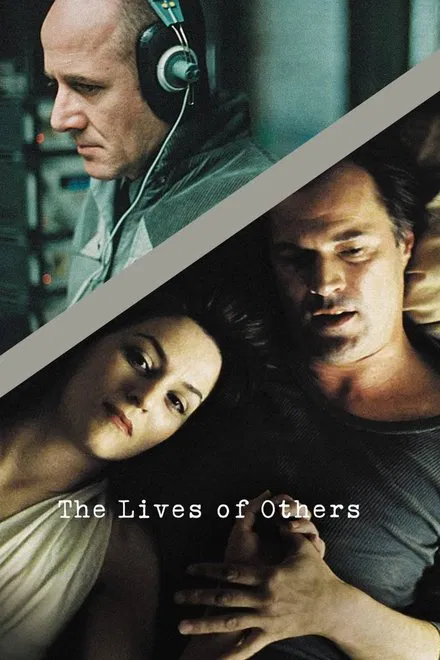
Directed by: Florian Henckel von Donnersmarck
Starring: Ulrich Mühe, Sebastian Koch, Martina Gedeck, Ulrich Tukur, Thomas Thieme
🧠 Introduction: Secrets, Betrayals, and Silent Acts of Courage
The Lives of Others (2006) is a quietly devastating portrait of surveillance and resistance in East Germany during the final years of the Stasi. Winner of the Academy Award for Best Foreign Language Film, Florian Henckel von Donnersmarck’s debut is a masterclass in suspense, subtlety, and moral complexity. But it is the film’s final act—at once somber and unexpectedly hopeful—that elevates it from tragedy to a celebration of the human spirit. What does Wiesler’s transformation mean? What is left after years of betrayal, and how does art heal even the deepest wounds?
🔍 The Mechanisms of Control: Listening In, Shutting Down
The film follows Hauptmann Gerd Wiesler (Ulrich Mühe), a loyal Stasi captain assigned to monitor playwright Georg Dreyman (Sebastian Koch) and his lover Christa-Maria Sieland (Martina Gedeck). Through headphones and hidden microphones, Wiesler is meant to root out dissent, but what he discovers instead is the beauty, pain, and truth of lives lived under constant threat. The tension between duty and empathy shapes every scene; Wiesler’s existence is structured by obedience, but his soul yearns for meaning and connection.
✍️ The Turning Point: Small Acts of Rebellion
As Dreyman and his circle conspire to publish an exposé on suicide rates in the GDR, Wiesler quietly begins to sabotage the investigation. He withholds evidence, misleads his superiors, and risks his career to protect those he’s meant to destroy. These acts are not dramatic, but cumulative—each a tiny rebellion against a system that has reduced people to statistics and suspicions.
The heartbreak comes in the form of Christa-Maria, manipulated by a powerful minister, who ultimately betrays Dreyman under threat. Her tragic death, a consequence of coercion and regret, is a shattering indictment of life under total surveillance. For Wiesler, it is the moment that fully severs him from the state he once served.
🏚️ After the Wall: Silence, Loss, and New Beginnings
The fall of the Berlin Wall brings freedom, but not catharsis. Dreyman learns years later that he was under surveillance all along, piecing together the evidence from Stasi files. He discovers that “HGW XX/7”—Wiesler—had protected him, not condemned him. The realization comes too late for direct gratitude, but it plants the seed for forgiveness and understanding.
Wiesler, now a postman, leads a life of quiet anonymity, neither celebrated nor condemned. His sacrifice is unremarked upon by history, but not by art. Dreyman, in an act of grace, dedicates his new novel—“Sonata for a Good Man”—to Wiesler, who finds the book in a shop, recognizes the inscription, and quietly purchases it, uttering only, “It’s for me.”
🎯 Ending Explained: Redemption in the Shadows
The ending of The Lives of Others is both melancholy and hopeful. It suggests that true resistance may go unnoticed, that the most heroic acts are often invisible, and that art has the power to recognize and redeem even the smallest gestures of decency. Wiesler’s transformation is not dramatic, but deeply human—a testament to the possibility of change, even in the most suffocating environments.
The final scene is an act of mutual acknowledgment across the divide of silence and time. It asks us to believe that, even in a world defined by betrayal and fear, compassion and truth can survive, quietly, waiting for the moment to be seen. The film leaves us with the sense that goodness, though battered and bruised, can endure and inspire. That is its quiet, lasting victory.